Review highlights the importance of understanding the mechanisms that affect phosphorus retention and absorption in farmed fish
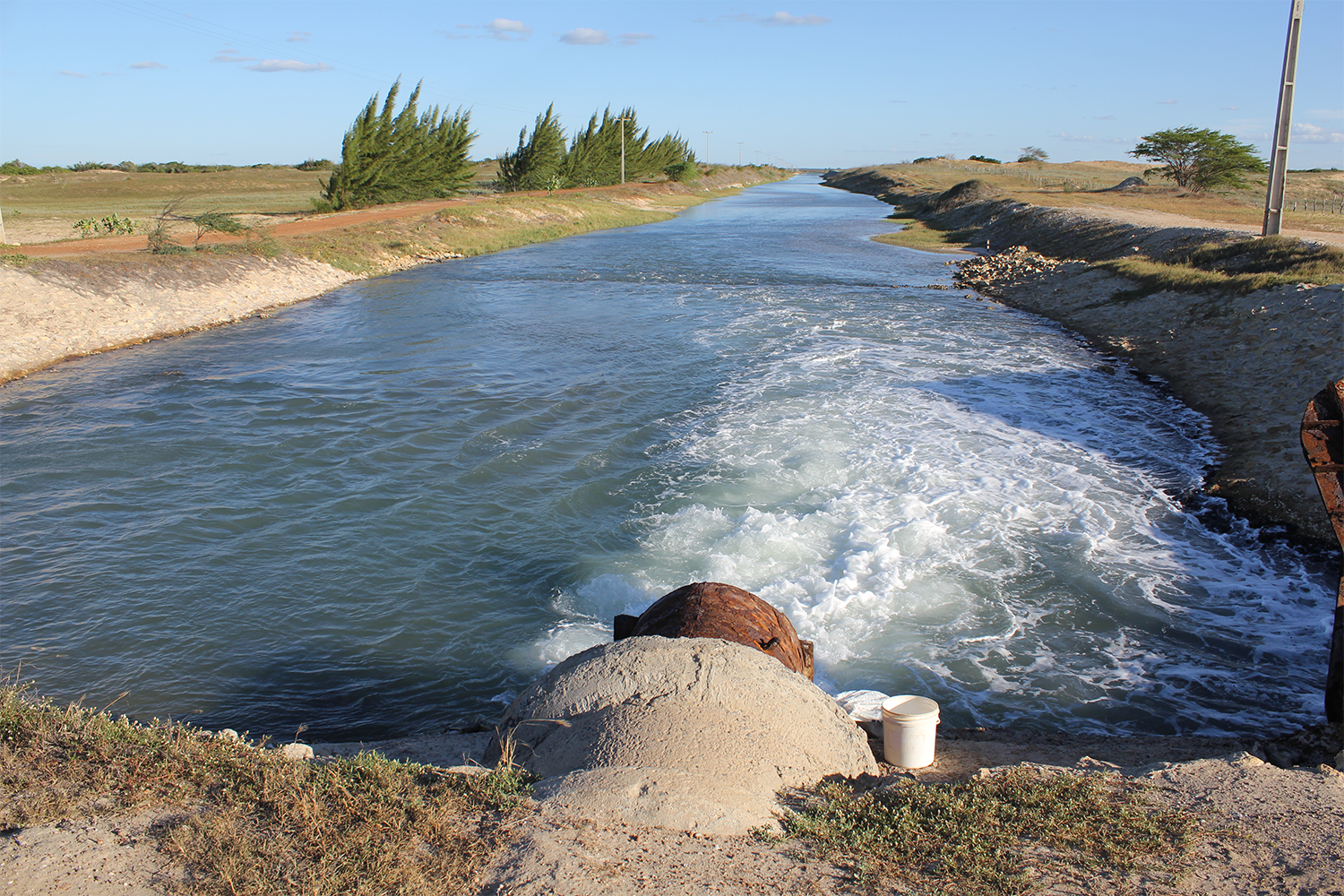
Phosphorus is an essential ingredient in fish feeds since it is required for various physiological processes, including bone formation, energy metabolism and cellular functions. Adequate phosphorus levels in fish diets are crucial for promoting growth and overall well-being. However, phosphorus also presents a potential challenge in terms of environmental pollution. Excessive phosphorus discharge from aquaculture operations can lead to water eutrophication, algal blooms, and other negative impacts on aquatic ecosystems.
Runoff from fish farms contributes to the nutrient load, including phosphorus, in surrounding water bodies, which can have detrimental effects on water quality and biodiversity. To mitigate these environmental concerns, aquaculture endeavors to optimize phosphorus utilization and minimize its environmental footprint. This involves developing innovative feed formulations that enhance phosphorus digestibility and absorption in farmed fish, thereby reducing phosphorus excretion into the environment. Additionally, techniques such as precision feeding, which aim to match feed supply with the nutritional requirements of fish, help prevent excessive phosphorus discharge.
Aquaculture can be made more sustainable by reducing phosphorus release. This can be achieved by optimizing feed composition, adding functional feed ingredients, managing gut health, and treating effluent aquaculture waters with bioremediation and absorbing materials. Anti-nutritional factors can be mitigated through processing and through the use of functional feed additives. Addressing these issues will reduce aquaculture’s environmental impact, ensuring aquatic ecosystem health and global food security. In addition, treating effluent aquaculture waters with bioremediation and absorbing materials can remove phosphorus from the water, preventing it from entering the environment.
This article – summarized from the original publication (Nathanailides, C. et al. 2023. Addressing Phosphorus Waste in Open Flow Freshwater Fish Farms: Challenges and Solutions. Fishes 2023, 8(9), 442) – discusses strategies for reducing phosphorus pollution from open-flow, freshwater fish farms. The original article also reviews morphological, physiological, and dietary factors affecting phosphorous absorption in fish.
Phosphorus waste reduction initiatives
Technological developments are playing a significant role in reducing the ecological impact of aquaculture systems, including addressing phosphorus pollution. Several advancements have emerged to improve water treatment efficiency and minimize the environmental impact of aquaculture effluents.
Open-flow aquaculture systems may face greater challenges in managing and controlling phosphorus pollution compared to closed recirculating aquaculture systems (RAS); nevertheless, there are some similar principles of mechanical and biological filtration that can be applied to treat aquaculture effluents and minimize downstream phosphorus pollution.
These include sedimentation and settling ponds, which can reduce the organic load and particulates in the effluents before they are discharged downstream in the aquatic ecosystem. The construction of wetlands or the cultivation of algae downstream of open-flow fish farms can offer natural filtration mechanisms to utilize vegetation and soil to filter and absorb nutrients, including phosphorus, from the effluents. By promoting the growth of specific algae or plants, phosphorus can be effectively removed from the aquaculture effluents.
Nutrient management and feed optimization is also a highly effective method for reducing phosphorus pollution in fish farms and the industry has made significant strides in this regard; the level of phosphorus in fish feeds has been significantly reduced and feeding regimes have been optimized to reduce the phosphorus content of aquaculture wastes.
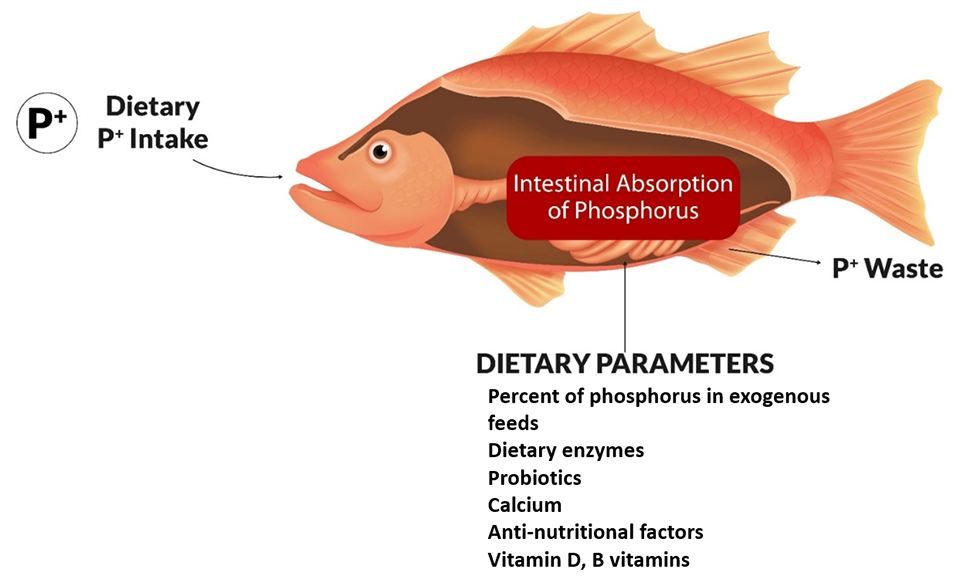
Significant progress has been made in the past through the implementation of phosphorus waste reduction initiatives that have been developed and refined over the years. These initiatives have relied on the application of best management practices, the optimization of feeding regimes, and the utilization of low-phosphorus feed ingredients. Moreover, promising results have been reported by incorporating feed supplements such as a-ketoglutarate phytase enzymes, organic acids and low-phosphorus plant protein combinations. These strategies offer promising avenues to not only reduce phosphorus waste but also to optimize fish growth and foster sustainable freshwater aquaculture practices.
Likewise, exogenous enzymes can serve as a safe and efficient bio-additive to regulate various aspects of fish performance and reduce phosphorus pollution into the environment. Incorporating exogenous enzymes into fish feed has the potential to improve growth performance, digestibility, feed utilization, whole-body composition and immune performance, subsequently reducing phosphorus pollution in open-flow freshwater fish farms.
Management strategies for reducing phosphorous pollution from aquaculture
The aquaculture-environment interaction is an interesting paradox. On one hand, aquaculture effluents containing excess nutrients discharged into surrounding waters contribute to phosphorus release, with detrimental effects on the ecological state of the ecosystem. Aquaculture, on the other hand, is susceptible to the effects of eutrophication, as excessive phosphorus levels can disrupt the ecological balance, as well as the water quality, fish health and growth. Recognizing this paradox, legislative initiatives are being implemented to address phosphorus pollution from various sources, including aquaculture and agriculture, to mitigate environmental impacts and promote sustainable aquaculture practices.
As a result, there are a variety of emerging or refined management strategies that can be used to reduce phosphorus pollution from aquaculture, including developing existing and new approaches, such as substituting fish meal with plant proteins and reducing the amount of phosphorus in the feed, optimizing feeding regimes to reduce feed conversion ratios or daily feed intake, using water treatment technologies to remove phosphorus from wastewater, and developing sustainable aquaculture practices that reduce the environmental impact of fish farming.
However, the feasibility and effectiveness of these strategies depend on various factors, such as the type of aquaculture system, the type of fish being farmed, and the local environmental conditions. Phosphorus removal in open-flow aquaculture systems within rivers is a critical concern for maintaining water quality and mitigating environmental impacts (Fig. 2).
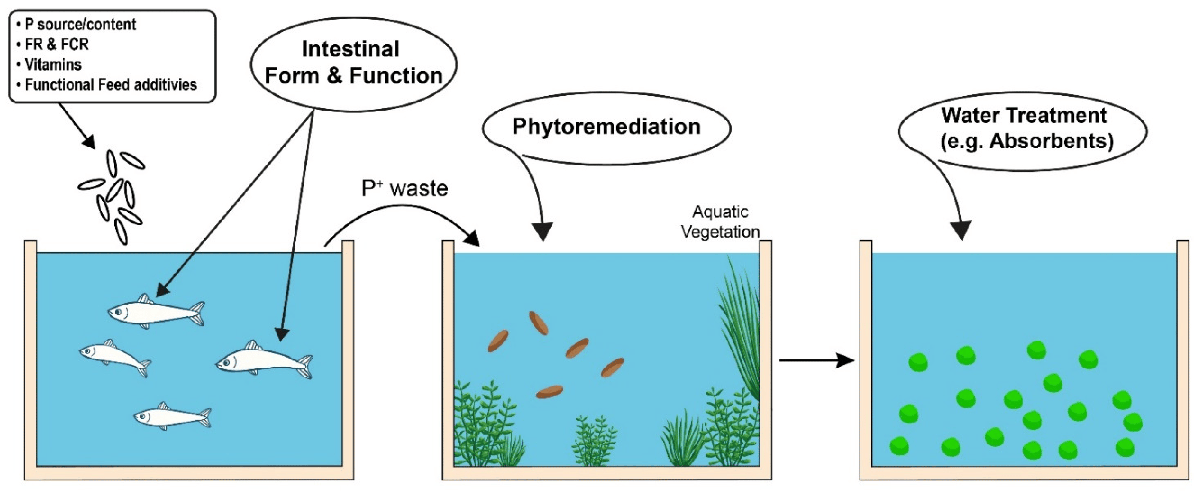
Phytoremediation
Emerging solutions such as phytoremediation and adsorbents/filtration offer promising approaches to address phosphorus pollution. These methods are based on the use of aquatic plants and mechanical and biological filters to remove excess phosphorus from the water.
Phytoremediation in river aquaculture can also be based on the use of floating aquatic plants, such as water hyacinth (Eichhornia crassipes) and duckweed (Lemna spp.), which have demonstrated effective nutrient removal capabilities. These plants can be strategically placed in the aquaculture system or in constructed wetlands along the flow path of the river to help mitigate phosphorus pollution. Another example involves the utilization of effluent collected after wastewater treatment with the purple bacterium Rhodopseudomonas sphaeroides. This effluent can be reutilized for microbial feed, medicament and aquaculture water.
Adsorbents and filtration systems
Adsorbents and filtration systems are effective approaches for mitigating phosphorus and reducing eutrophication impacts in river-based aquaculture. Modified clays or activated carbon, acting as adsorbents, can bind to phosphorus particles in water, facilitating their removal. Similarly, filtration systems equipped with specific media or membranes can capture phosphorus particles.
Zeolites, for instance, have demonstrated potential for removing phosphorus from aquaculture effluents. Additionally, biomaterials derived from lodgepole pine have been utilized to reduce aquaculture waste and mitigate micronutrient-induced eutrophication. For example, treating rainbow trout effluents with these biomaterials for up to 60 minutes resulted in the removal of 150 to 180 grams of phosphorus per metric ton, providing a method for eutrophication reduction in aquaculture.
The economic costs associated with these strategies can be a determinant of their potential applications in aquaculture. It is important to conduct thorough economic feasibility studies and cost-benefit analyses specific to each aquaculture operation to determine the financial viability and the return on investment of these solutions. Factors such as potential cost savings from reduced water pollution, improved fish health and regulatory compliance should also be considered.
The role of probiotics
Efforts to reduce the organic load of fish farms can utilize probiotics, which can affect phosphorus dynamics released by fish farms through their interaction with the intestinal microbiota of farmed fish. By incorporating probiotics into the fish diet or introducing them into the water column, it is possible to modulate the composition and activity of the gut microbiota, thereby enhancing the digestive capacity of fish in relation to phosphorus assimilation and utilization.
Probiotics, when added to the fish diet or introduced into the water column, can alter gut microbiota and enhance the digestive capacity of fish. This enhanced assimilation leads to a reduction in phosphorus waste, which is a critical issue in freshwater fish farms due to its environmental impact. By increasing the efficiency of nutrient utilization, the amount of phosphorus excreted into the environment can be minimized.
Effects of poultry protein concentrate, phosphorus supplementation in barramundi juveniles
Several studies have shown that probiotics and prebiotics, which can promote the growth of beneficial gut bacteria, can improve the feed conversion efficiency and growth performance of fish. Certain strains of probiotic bacteria, when administered to aquaculture systems, have shown promise in improving phosphorus utilization and assimilation and reducing its release into the surrounding water.
Additionally, probiotics can also promote the growth of beneficial bacteria in the gut of fish, leading to enhanced nutrient absorption and utilization. This can result in improved feed conversion and reduced waste production, including phosphorus excretion. However, the effectiveness of probiotics in reducing phosphorus pollution can vary depending on several factors, including the specific probiotic strains used, the aquaculture system’s characteristics and the feed composition.
Probiotics can also be introduced into the aquatic environment, either by adding them to the water column or incorporating them into filtration systems. This alternative approach allows probiotics to exert their effects on gut function and directly interact with the aquaculture water and sediment, potentially enhancing their remediation effects.
Likewise, through competitive exclusion, the application of a mixture of probiotics, such as lactic acid bacteria, phototrophic bacteria, and yeast, can inhibit the growth of pathogenic and harmful bacteria in fish farms, as well as reduce phosphorus wastes. Researchers have reported a significant decrease (77.6 percent) in phosphorus concentrations in the water from an aquaculture pond following the application of a mixture of probiotics. These findings suggest that probiotics can not only function as dietary components, but they can also contribute to bioremediation efforts, ultimately improving water quality parameters and reducing nutrient loads in aquaculture effluents.
However, further research is still needed to optimize the use of probiotics for phosphorus management in freshwater aquaculture, as their effectiveness can vary depending on factors such as bacterial strains, aquaculture system characteristics and feed composition.
Perspectives
While several methods and strategies can contribute to reducing phosphorus pollution from fish farms, a holistic approach encompassing various factors should be considered. Cost analysis, proper feed management, water quality monitoring and nutrient cycling play pivotal roles in effectively addressing phosphorus-related environmental concerns. Understanding the mechanisms of phosphorus absorption, dietary factors, anti-nutritional substances and intestinal morphology can support optimized aquaculture practices to reduce phosphorus release.
Now that you've reached the end of the article ...
… please consider supporting GSA’s mission to advance responsible seafood practices through education, advocacy and third-party assurances. The Advocate aims to document the evolution of responsible seafood practices and share the expansive knowledge of our vast network of contributors.
By becoming a Global Seafood Alliance member, you’re ensuring that all of the pre-competitive work we do through member benefits, resources and events can continue. Individual membership costs just $50 a year.
Not a GSA member? Join us.
Author
-
Cosmas Nathanailides, Ph.D.
Corresponding author
Department of Agriculture, School of Agriculture, University of Ioannina, GR 47100 Arta, Greece[114,103,46,105,111,117,64,110,97,104,116,97,110]
Tagged With
Related Posts
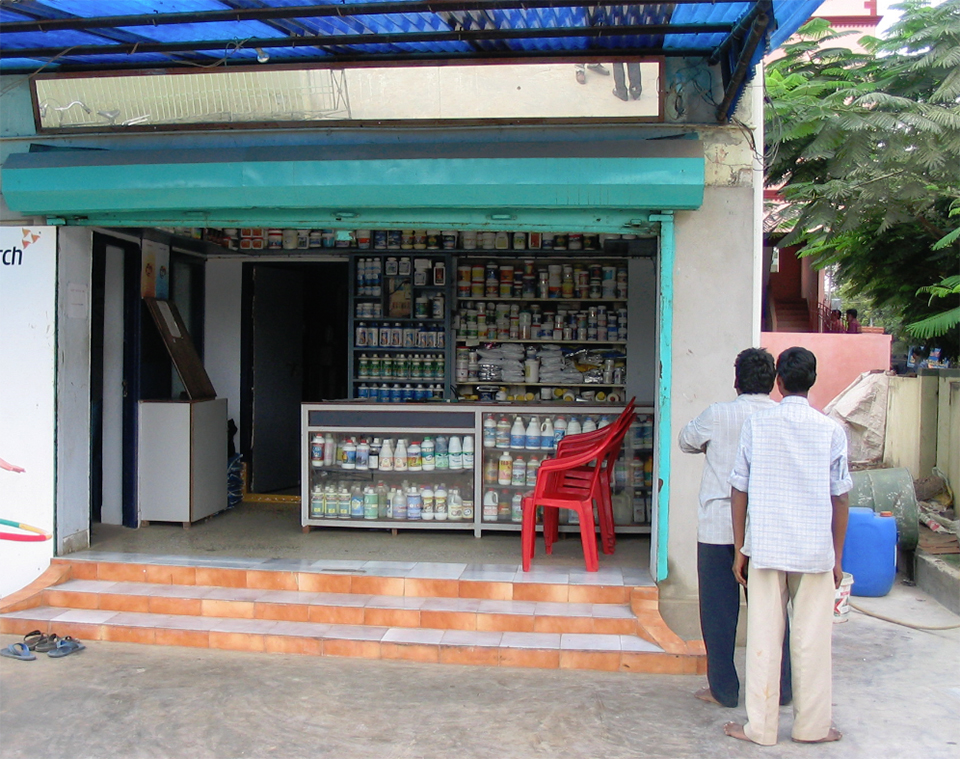
Responsibility
A review of water quality improvement products
Prof. Boyd examines products used by aquafarmers to improve water quality and conditions in their ponds and discusses their efficacy.
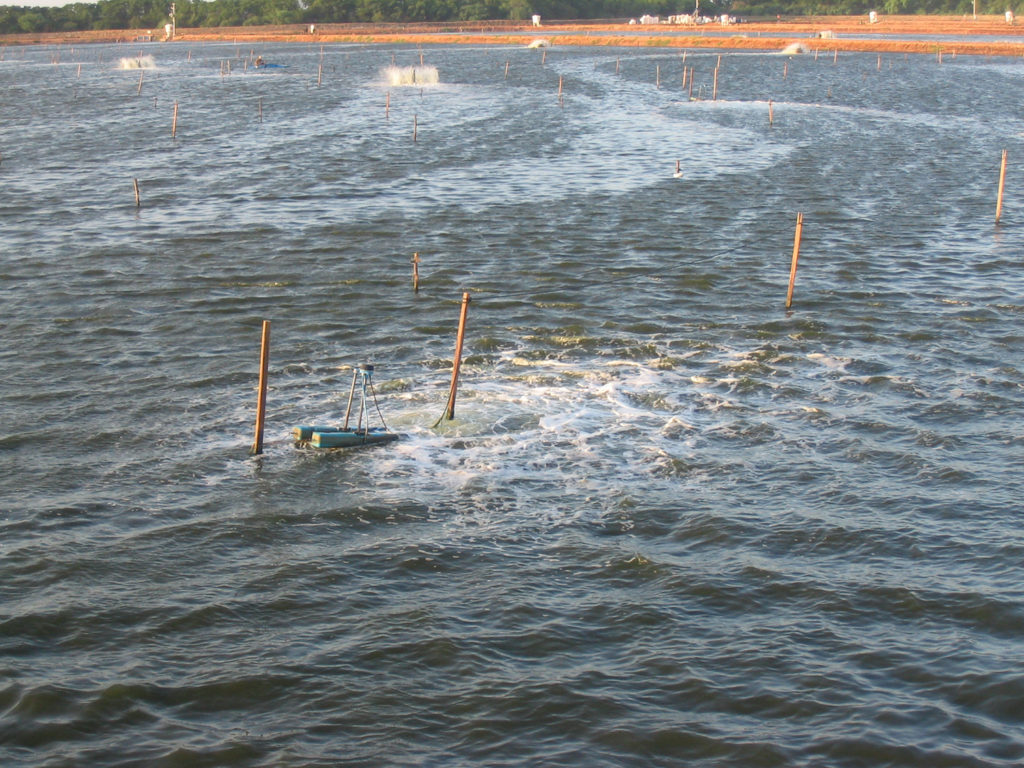
Health & Welfare
Dissolved oxygen dynamics
Dissolved oxygen management is the most important requirement of aquaculture pond water quality. DO concentration below 3 mg/L is stressful to shrimp.
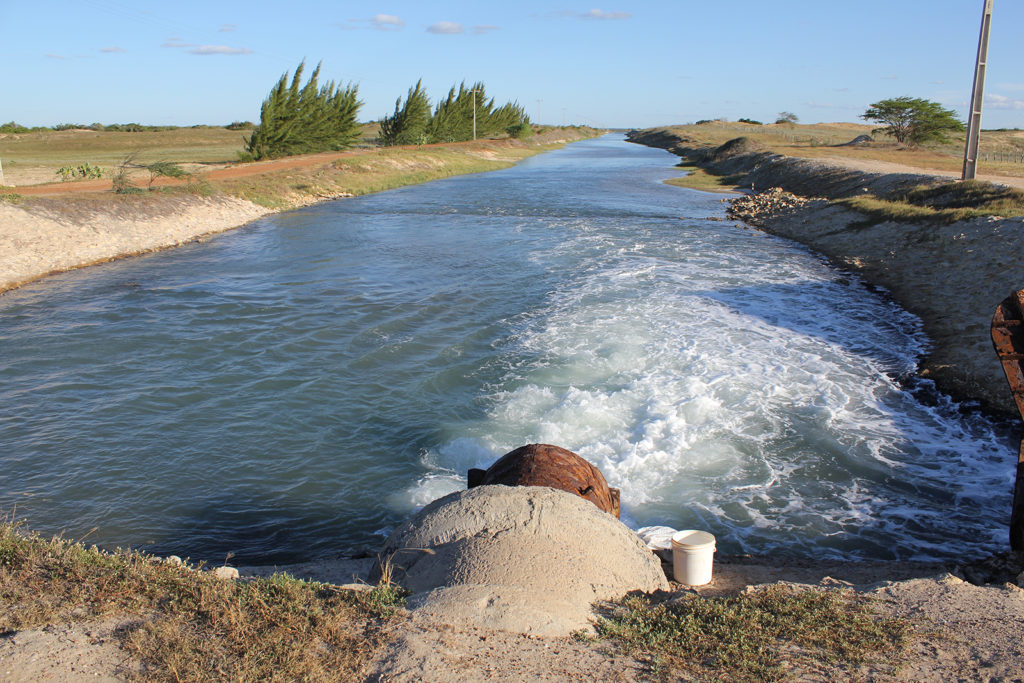
Responsibility
Nitrogen, phosphorus, eutrophication and effluent standards for aquaculture certification
Prof. Boyd discusses eutrophication of water bodies, effluents and nutrients from aquaculture facilities, and aquaculture certification along with the difficulties to develop maximum acceptable concentration limits and load limits for nitrogen and phosphorus discharge.
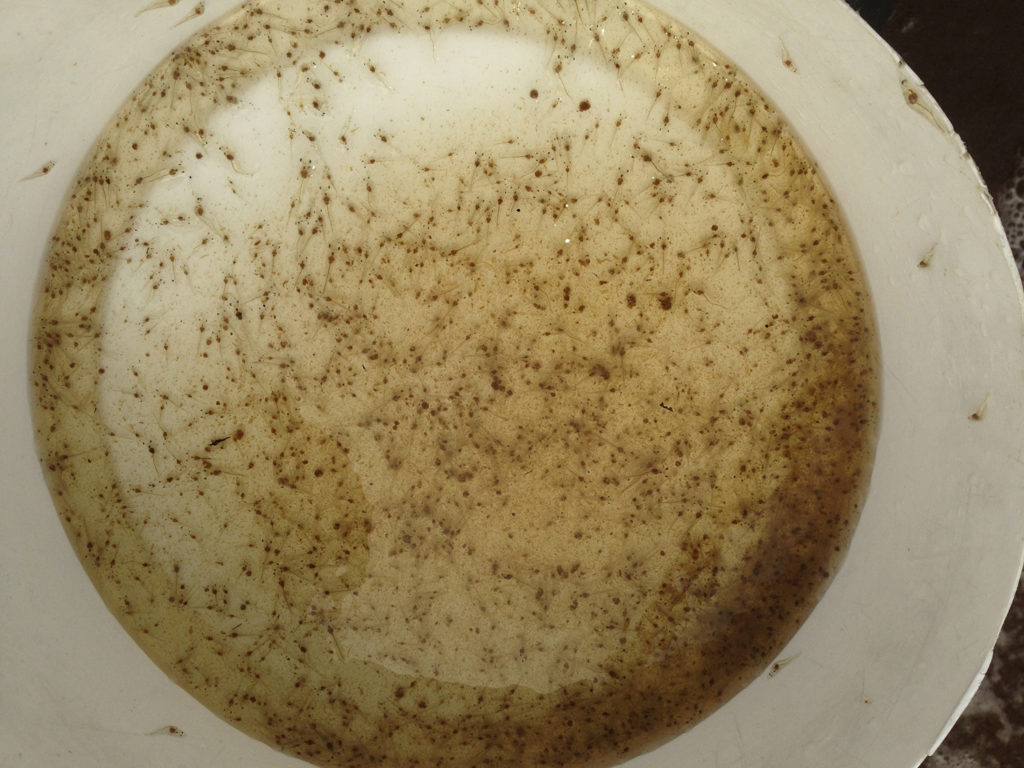
Responsibility
Carbon-nitrogen ratios in pond fertilization and biofloc systems
Prof. Claude Boyd on the importance of carbon-nitrogen ratios for pond fertilization and biofloc systems, and the relevance of precise carbohydrate inputs.



